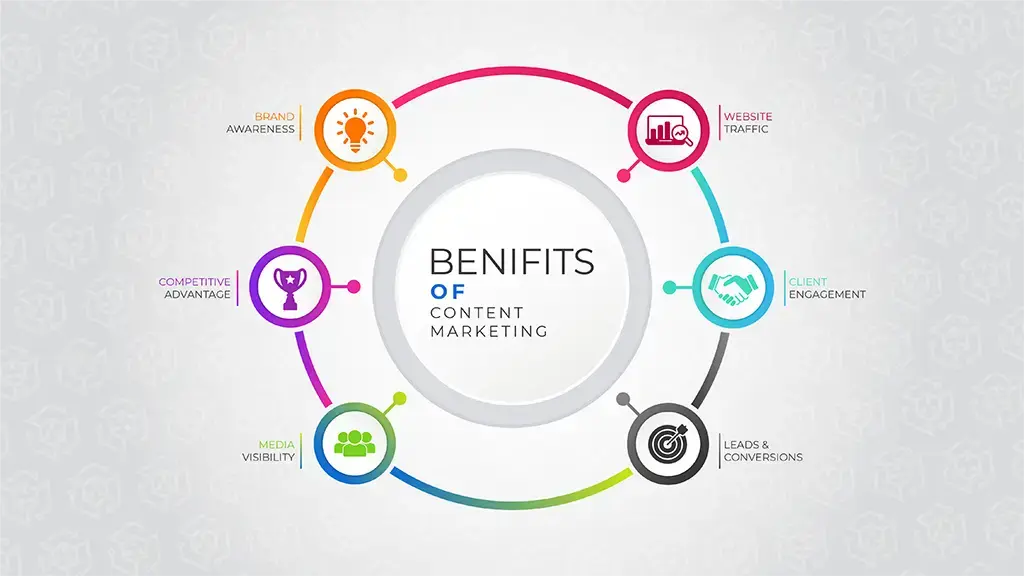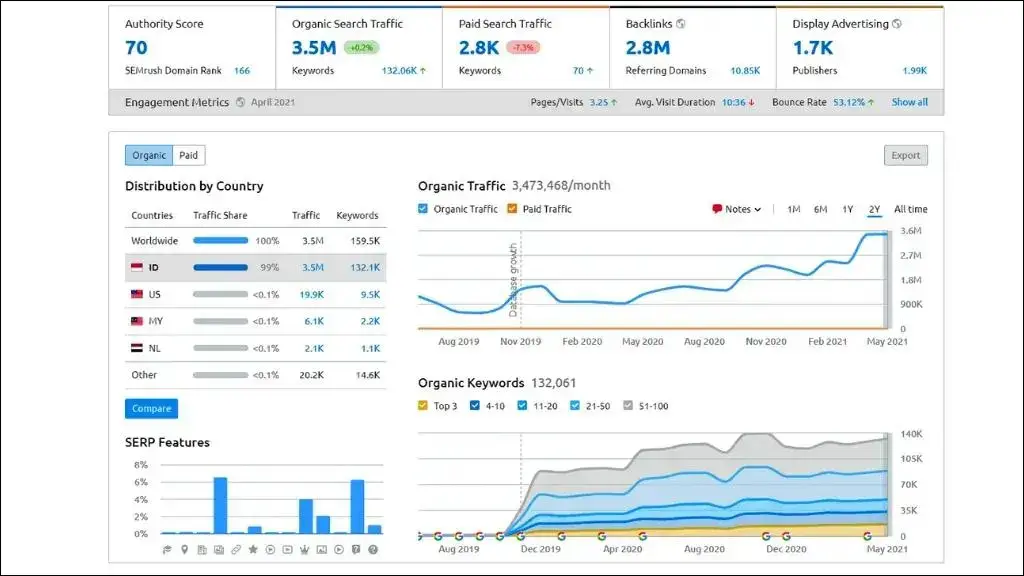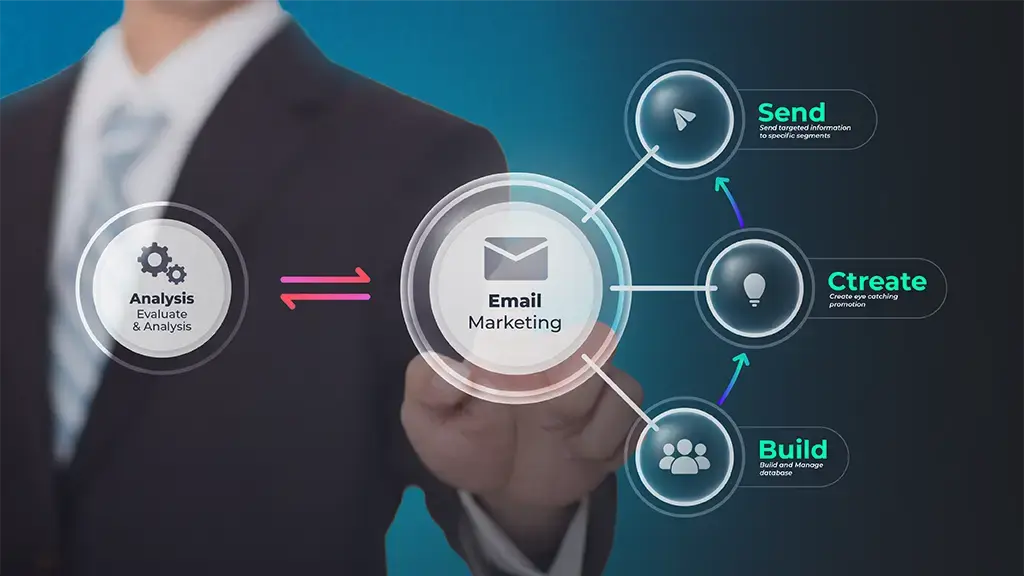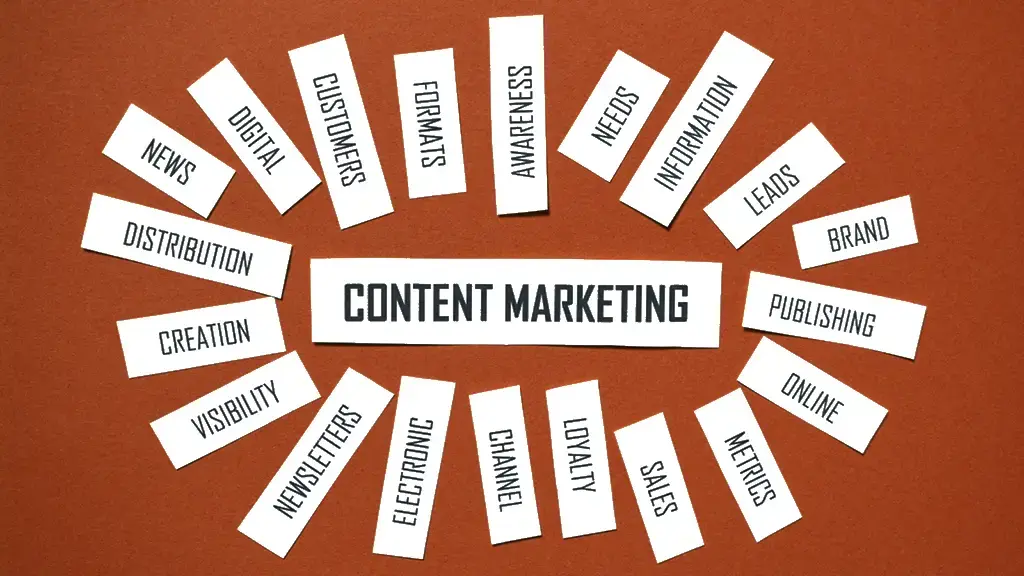Content Marketing: The Secret To Driving Sales
By
Word Sorceror
Content marketing isn't just about creating fancy articles or videos. It's a powerful tool to attract new customers and ultimately increase sales. Here's how:
The Stages of the Buyer's Journey
Imagine your customers go through a 3-stage journey before buying:
Awareness Stage: Consumers realize they have a problem but might not know the solution yet.
Consideration Stage: Consumers understand the issue and are researching solutions.
Decision Stage: They've chosen a solution and are comparing different options (including yours!).
Content Marketing for Each Stage
Awareness: Create informative content like blog posts, social media content, and infographics that address your target audience's problems. This positions you as a helpful resource and builds trust.
Consideration: Offer deeper content like case studies, product comparisons, and webinars. Educate them on your solutions and how they stack up against competitors.
Decision: Provide free trials, demos, consultations, and coupons to convince them to choose you. Make the buying process smooth and address any questions they might have.
Building a Sales Funnel
Think of a sales funnel like a marketing pathway that guides potential customers towards a purchase.
Here's how to create content for each stage:
Top-of-the-Funnel (Most Visitors): Attract attention with "how-to" guides, e-books, and infographics. Focus on being helpful and informative, not pushy. Use organic search, social media, and email marketing to reach them.
Middle-of-the-Funnel (Fewer Visitors): Offer deeper content like product reviews, success stories, and webinars. Build relationships and establish yourself as an expert. Focus on organic search, email marketing, and PPC ads.
Bottom-of-the-Funnel (Least Visitors, Highest Intent): Showcase your product's superiority with customer testimonials, reviews, and clear product pages. Use email marketing, organic search, and PPC ads to reach them.
Benefits of Content Marketing for Sales

More Website Traffic: Valuable content attracts visitors searching for information online.

Increased Brand Awareness: People discover your brand through informative content.
Lead Generation: Content keeps your brand relevant and captures leads through email signups or calls to action.
Established Authority: Quality content positions you as an expert, building trust with potential customers.
Why is Content Marketing Important for Sales?
Content marketing fosters an ongoing conversation with potential customers. It builds trust, loyalty, and ultimately leads to more sales. It also improves your website ranking and traffic, benefiting your business in the long run.
10 Ways Content Marketing Drives Sales
1. Blogs
Imagine you run a bakery. Instead of bombarding people with ads for your cupcakes, you can write delicious recipes, helpful baking tips, and articles on the history of different pastries.
People searching online for "best red velvet cake recipe" or "gluten-free dessert ideas" stumble upon your blog.
They're impressed by your knowledge and expertise, and maybe even try out a recipe or two. This increases brand awareness and positions your bakery as a trusted source.
When they have a craving or need a cake for a special occasion, guess where they're more likely to go? Your bakery! The key is to create content relevant to your target audience's needs and interests, not just push products.
Don't forget your ultimate goal – SALES. While your blog shouldn't be a constant sales pitch, you can subtly weave your offerings into the content. For example, your red velvet cake recipe could mention your bakery's special cream cheese frosting available for purchase.
2. SEO
Search Engine Optimization (SEO) is like having a neon sign for your website in the vast online world. The more informative and fresh content you publish, the higher your website ranks in search results.
Imagine you have a sports and fitness accessories brand. You'd want your digital assets (Web Pages, Blogs, PDFs ranking on top of relevant SERPs and show up when someone searches for say "best hiking shoes".
Regularly publishing content shows search engines your site is active and relevant, making it more likely potential customers will find you.
3. Paid Search & Social Media Ads
Brands can often bring in potential leads and clients through paid search and social media ads.
Imagine offering a free downloadable guide titled "The Ultimate Guide to Choosing the Perfect Hiking Backpack" on your outdoor gear store's website. You can then create targeted social media ads or pay-per-click (PPC) ads on search engines to promote this free guide.
People interested in hiking will be drawn to the valuable content, and in exchange for downloading the guide, they might provide their email addresses. This allows you to nurture these leads with additional content and special offers, potentially converting them into paying customers.
Remember, track your ad performance and adjust your strategy based on what's working to maximize your return on investment (ROI).
4. Social Media Marketing (Organic)
Social media platforms are like bustling online marketplaces where you can showcase your content and connect with potential customers.
Share your blog posts, infographics, and short explainer videos on social media platforms like Facebook, Instagram, or LinkedIn. Scheduling tools can help ensure your content reaches people even when they're not actively browsing social media.
5. Email Marketing

Email marketing allows you to connect with a targeted audience who has already shown some interest in your business.
Let's say you run a fitness center and someone downloads a free e-book on "Healthy Meal Prep Tips for Busy People" from your website. You can then add them to your email list and send them informative newsletters with healthy recipe ideas, workout routines, or special promotions on gym memberships.
Encouraging subscribers to interact with your content and provide feedback allows you to understand their interests and tailor future content accordingly.
6. Affiliate Marketing
Imagine you sell organic beauty products.
Partnering with beauty bloggers or social media influencers who love your brand can significantly expand your reach. Provide them with high-quality content like product reviews or informative articles that they can share with their audience.
You can even offer them training materials or affiliate links where they earn a commission for every sale generated through their content. This leverages the trust and credibility influencers have built with their followers, potentially turning them into brand advocates for your business.
7. Public Relations & Media Coverage
Instead of sending a press release directly promoting your new line of organic face serums, consider pitching a story to a beauty magazine or website about the benefits of natural ingredients in skincare.
By offering valuable content and expert insights, you can secure media coverage that positions you as a leader in the organic beauty industry. This builds trust and credibility with potential customers who are more likely to choose your products.
8. Landing Pages with Opt-Ins
Landing pages are targeted web pages designed to capture leads. Imagine offering a free downloadable white paper on "The Top 10 Cybersecurity Threats for Businesses" on your IT security company's website.
Your landing page would explain the benefits of the white paper and encourage visitors to provide their contact information in exchange for the download. This allows you to build an email list of potential clients interested in cybersecurity solutions and nurture them with additional content and special offers.
9. Offline Content Marketing
The power of content marketing isn't limited to the digital realm.
Imagine you're a landscape architect.
Repurpose some of your best blog content, like "Stunning Backyard Landscaping Ideas on a Budget" or "5 Easy Steps to Create a Pollinator-Friendly Garden," into informative brochures or eye-catching flyers. Distribute these at local home improvement stores, gardening events, or community fairs.
People flipping through the brochure might be impressed by your expertise and inspired to contact you for their next landscaping project. The key is to offer valuable content that showcases your knowledge and encourages them to learn more.
10. Building Long-Term Relationships
Think of client acquisition as a cycle, not a funnel. Imagine you run a financial planning firm.
Consider creating content that educates potential clients on topics like "How to Set Up an Emergency Fund" or "Smart Investment Strategies for Young Adults."
This attracts leads who are interested in financial planning but might not be ready to invest right away. By nurturing these leads with informative content and building trust, you can convert them into paying clients in the future.
Furthermore, happy clients who have benefited from your services might become advocates for your business, recommending you to their friends and family. This organic word-of-mouth marketing is a powerful tool for long-term growth.
By consistently creating valuable content, you can attract new leads, build trust with potential clients, and nurture existing relationships. This approach positions your business as a thought leader in your industry and keeps you top-of-mind when people need your services. Remember, content marketing is a marathon, not a sprint. The more informative and engaging content you create, the more likely you are to see long-term success.
Content Marketing Strategies to Drive Sales

Content Marketing Strategies can drive business sales and profit, given the right approach. Follow these simple steps to engage more audience,
1. Set SMART Goals
Before diving in, define clear and achievable goals for your content marketing efforts.
SMART Goals help you determine -
Specific: Exactly what you want to achieve.
Measurable: How you track progress (e.g., website traffic, leads generated)
Attainable: Whether your goals are realistic and achievable.
Relevant: Whether your goals align with your sales objectives.
Time-bound: Whether you've set realistic deadlines for achieving your goals.
By outlining SMART goals, you ensure your entire team is on the same page and working towards concrete objectives.
2. Develop a Content Marketing Strategy
Most brands today jump into content marketing without a plan. While creating some content is better than none, a well-defined strategy definitely helps maximize your impact.
A well thought out content marketing strategy usually has the following characteristics.
Focus: A strategy helps you focus on the type of content that resonates with your target audience.
Consistency: It ensures consistent content creation and avoids a scattered approach.
Measurement: A strategy allows you to effectively measure the success of your content efforts.
3. Create Content that Matters to Your Audience
The key to successful Content Marketing is creating content that genuinely benefits your audience.
Address the following points to create highly engaging and relevant content.
Know Your Audience: Research and understand the specific needs and challenges faced by your target companies.
Buyer Personas: Develop buyer personas that represent different types of customers within those companies.
Pain Points & Solutions: Address your audience's pain points throughout the buyer's journey (awareness, consideration, decision). Show how your products or services solve their problems.
4. Patience is Key
Content marketing is a marathon, not a sprint. Don't expect immediate results. It may take time to build an audience and see conversions (sales). However, the benefits of organic conversions (leads generated through your content) can be long-lasting and pay off significantly over time.
5. Target the Right Keywords

For example, if you sell accounting software, target highly relevant and profitable keywords like "accounts payable automation" or "payroll software for small businesses.
Remember to plan your keyword selection tactics (i.e. whether you ought to target high search volume keywords initially, or try to rank on low search volume keywords) before you start targeting them.
6. Create Helpful Content
Make content that educates potential customers about your offerings.
Example: A construction company could create content explaining different types of building materials and their uses. Think Zoom creating guides on "how to run effective virtual meetings" or "best practices for remote collaboration."
7. Tell Engaging Stories
Use stories to make your content interesting and memorable.
Example: A marketing agency could showcase how they helped a local restaurant increase website traffic through social media marketing. Think Mailchimp highlighting a small business that used its email marketing platform to launch a successful campaign.
8. Mix Up Your Content
Experiment with different formats to see what works best for your audience.
Example: A logistics company might create short explainer videos on shipping regulations, infographics on different shipping options, and blog posts on navigating global supply chains. Think of BuzzFeed offering quizzes, listicles, and investigative journalism content.
9. Focus on Quality, Not Quantity
Don't just create a lot of content; make sure it's valuable.
Example: A manufacturing company might create in-depth case studies showcasing how they helped clients improve production efficiency. Think of The Economist creating well-researched articles on global economic trends.
By creating valuable content, you'll attract happy customers who will spread the word about your amazing services. This "word-of-mouth" marketing is a sustainable way to build a strong customer base without pushy sales tactics, ultimately driving sales.
By following these best practices, you can create a content marketing strategy that drives sales and positions your company as a trusted thought leader in your industry.
FAQs
1. How can content marketing help me sell more?
Think of content marketing as a step-by-step guide to attract new customers:
Know Your Audience: Understand who you're selling to and what problems they face.
Create Great Content: Make informative blog posts, social media content, videos, etc. that address those problems. Position yourself as a helpful resource.
Variety is Key: Mix up your content with ebooks, infographics, webinars, etc. Keep your audience engaged.
Search Engine Friendly: Make sure your content is easy for search engines to find. This helps people searching for solutions discover you.
Spread the Word: Share your content on social media, email marketing, etc. Get it in front of potential customers.
Track Your Results: See what's working and what's not. Keep improving your content marketing strategy.
Partner with Influencers: Team up with bloggers or social media personalities to promote your brand and reach a wider audience.
Capture Leads: Offer free ebooks or resources in exchange for email addresses. This helps you stay connected with potential customers.
Use Infographics: Simplify complex information with visually appealing infographics.
Podcasts for Awareness: Talk about your industry and offer insights. Interviews with experts can also be interesting.
2. Why is content marketing better than other marketing methods?
Here's why content marketing might be a better option:
Cost-Effective: Compared to traditional ads, creating content is cheaper and reaches more people for less money.
Long-Term Results: Unlike ads, good content keeps attracting visitors and generating leads for months or even years.
Higher Engagement: Valuable content gets people interested in your brand and more likely to share it, increasing overall engagement.
More Leads, Lower Costs: Studies show content marketing generates 3 times more leads than traditional marketing while costing 62% less.
3. How can I tell if my content marketing is working?
Here are some key metrics to track the success of your content marketing efforts:
Website Traffic: See how many people are visiting your website from search engines and social media. More traffic often means your content is performing well.
Social Media Engagement: Look at how many people like, share, and comment on your content. This shows people are interested in what you have to say.
Lead Generation: Track how many people sign up for your email list or contact you for more information. These are potential customers.
Email Engagement: See how many people open your emails and click on the links you provide. This indicates they're interested in your offerings.
Conversions: Ultimately, track how your content marketing translates to sales. This could be leads generated, purchases made, etc.
By monitoring these metrics, you can adjust your content marketing strategy to maximize its impact on your sales.



